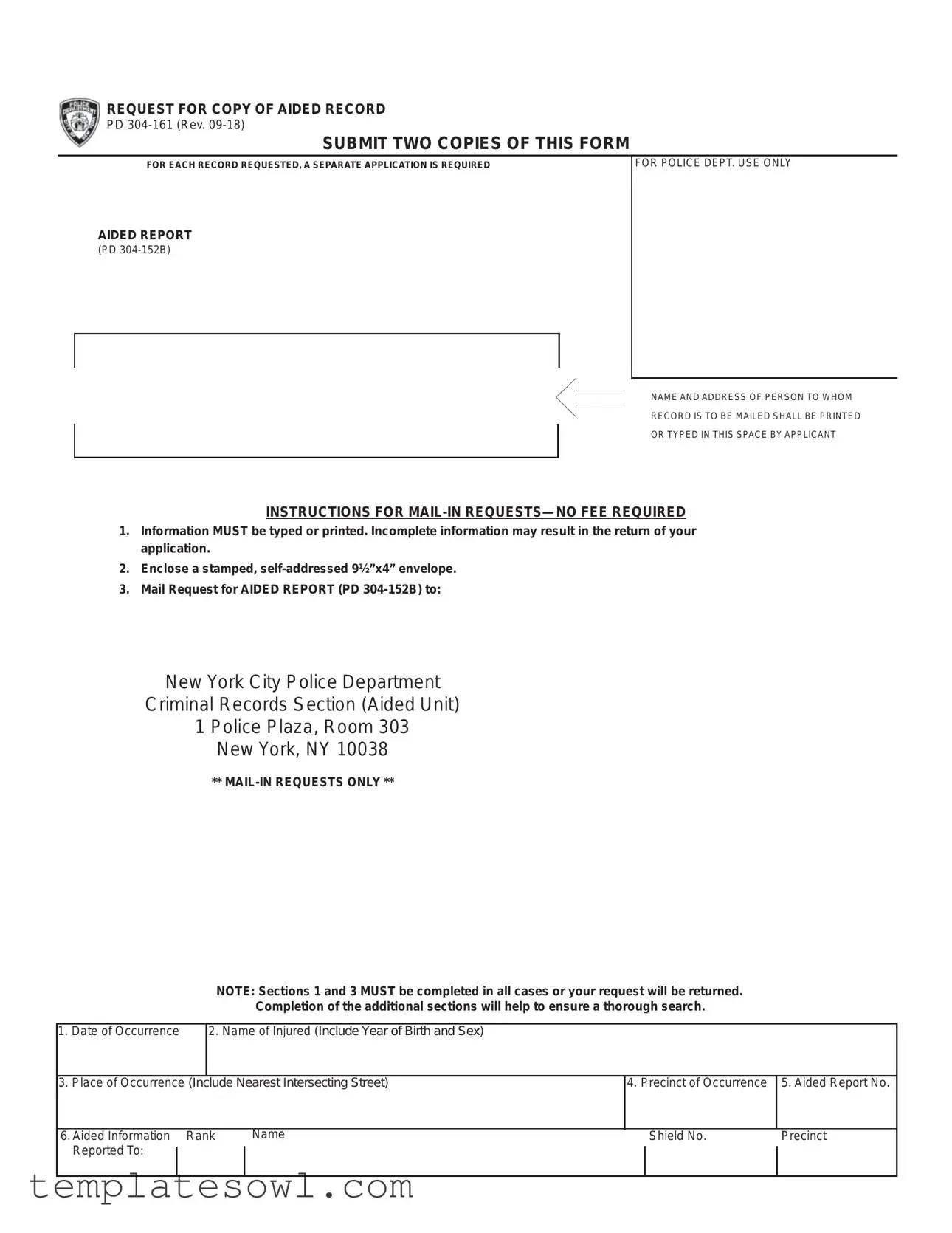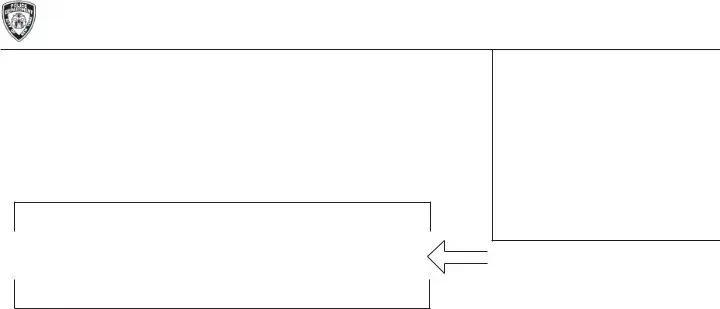What is the PD 304 161 form used for?
The PD 304 161 form is a request for a copy of an aided record from the New York City Police Department. This form is specifically used when individuals seek access to reports related to incidents where someone was injured or aided by police authorities. It is essential for those who need such records for personal, legal, or informational purposes.
How do I fill out the PD 304 161 form?
To complete the PD 304 161 form, ensure that all information is typed or printed clearly. Provide the required details including the date of occurrence, the name of the injured person (along with their year of birth and sex), place of occurrence, and any other relevant data. Incomplete forms may be returned, so it's important to fill in all mandatory sections indicated in the instructions.
What do I need to include when submitting the form?
When submitting the PD 304 161 form, you must include two copies of the completed form for each record request. Additionally, enclose a stamped, self-addressed envelope measuring 9½”x4” to facilitate the return of the records. This ensures that your request is processed smoothly and minimizes delays.
Is there a fee for submitting the PD 304 161 form?
No fee is required for mail-in requests for the PD 304 161 form. This means you can submit your request without incurring any costs, which can be particularly helpful for individuals seeking access to police reports for personal or legal reasons.
Where do I send the completed form?
You should mail your completed PD 304 161 form along with the self-addressed envelope to the New York City Police Department Criminal Records Section (Aided Unit) at 1 Police Plaza, Room 303, New York, NY 10038. Ensuring it is sent to the correct address will help you receive your requested records promptly.
What happens if I don’t fill out all the sections?
If all required sections of the PD 304 161 form are not completed, your request may be returned to you. Sections 1 and 3 must be fully completed in all cases. Even though additional details are not mandatory, providing them can lead to a more thorough search and may expedite the processing time.
Can I request police department records other than aided records using this form?
No, the PD 304 161 form is specifically for requesting aided reports (PD 304-152B) only. If you are looking for different types of police records, you will need to use a different form, as a separate application is required for those records. Ensure you are using the correct documentation to avoid any issues with your request.

